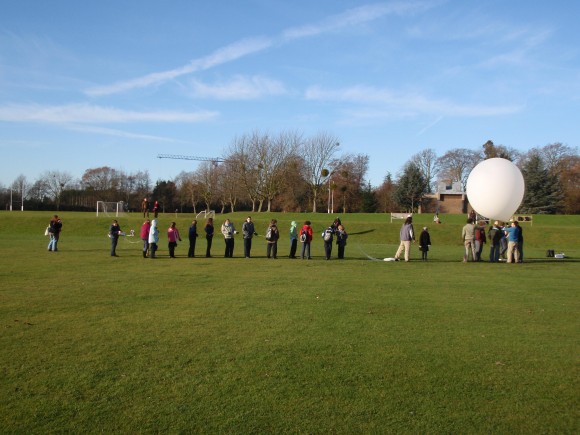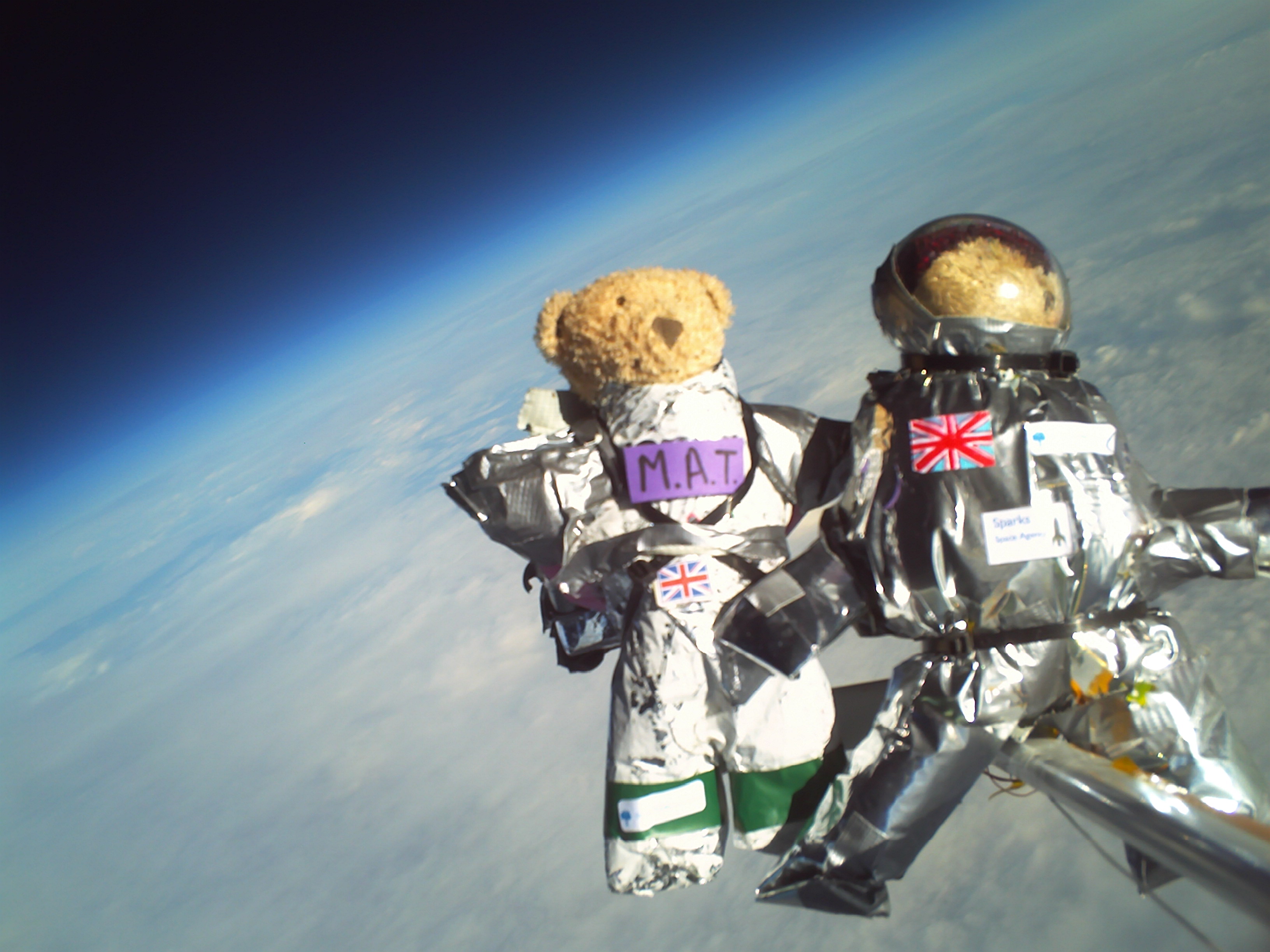[/caption]
I don’t think this is what Iran has in mind about launching animals into space, but … you never know. Four teddy bears voyaged to the edge of space on Monday, December 1st via high altitude helium balloon. This was done as an experiment by a student organization at Cambridge University in England, along with a science club and community college. The bears were lifted to 30,085 meters above sea level, and the goal of the experiment was to determine which materials provided the best insulation against the -53 ° C temperatures experienced during the journey. Each of the bears wore a different space suit designed by 11-13 year-olds who were took part in the experiment. But the main goal of the endeavor was to give young students the opportunity to try their hand at a real mission in sending objects into space.
“We want to offer young people the opportunity to get involved in the space industry whilst still at school and show that real-life science is something that is open to everybody” says Iain Waugh, chief aeronautical engineer of student-run Cambridge University Spaceflight.
“High altitude balloon flights are a fantastic way of encouraging interest in science. They are easy to understand, and produce amazing results,” said Daniel Strange, treasurer of CU Spaceflight.

The payload which carried the bears was designed by CU Spaceflight and contained several cameras, a flight computer, GPS and a radio. During the 2 hour and 9 minute flight, the radio broadcasted the location of the payload to a chase team on the ground. The team predicted the landing site using wind speed data and arrived in time to see the payload and teddy bears drift slowly back down to earth by parachute.
CU Spaceflight is a student-run society aiming to reduce the cost of sub-orbital spaceflight. They have launched several payloads to near space on high-altitude helium balloons and are currently designing a system to launch a rocket from a balloon platform to outer space for under £1000 per launch. They have run several outreach events and are currently holding the UK Space Challenge 2009, as part of the University of Cambridge’s 800th Anniversary. Twenty four teams of science students aged 14-18 are competing to design a scientific experiment that will be taken to near space on a high-altitude helium balloon.
More images of the flight.
More information about Cambridge University Spaceflight.
Source: CU Spaceflight


I wonder if they tested materials that would interest NASA or the ESA? (I was in school in the wrong decade, If I knew then what I know now, I would have taken a very different course of study in colledge.)
Wa-haaay! Britain takes a decisive lead in the space race. Let’s hope the Animal Liberation Front don’t hear about this, though.
The next goal should be to organise an actual picnic in space. Then we can move on to the big stuff, like teddiforming Mars so it’s suitable for soft toy colonisation.
Awww, those kiddlies, willing to give up their teddies for the pursuit of knowledge!
A great way to encourage younsters but next time please use polar teddies… 😉
Cool! (..in more ways than one!) Younger the better. Interest peaked in youngsters may lead to better interest and attention in math and science courses. This is very much needed to replace some of the current scientists and engineers holding these programs together. Unfortunately, they won’t be there forever and will need support and replacement eventually.
teddyforming. thats some funny stuff right there!!
I stand corrected – Lise Doucette of BBC World Service News Hour just interviewed “Megan”, one of the children involved. She said “no. way.” would she ever send her teddy bear into space, they bought other teddy bears to send. Also said the winner was insulated with tin foil, polar fleece, chocolate milk packaging and orange juice packaging, lol.
Wow! How come they do all the fun stuff when I’m not in school anymore?! How come the bears didn’t freeze and break apart? I thought that space was super cold…did the kids/teachers insulate the bears with material(s) that could absorb….I dunno, whatever it is that would cause the bears’original material to freeze & break off? I would have loved doing this in Science!!!!